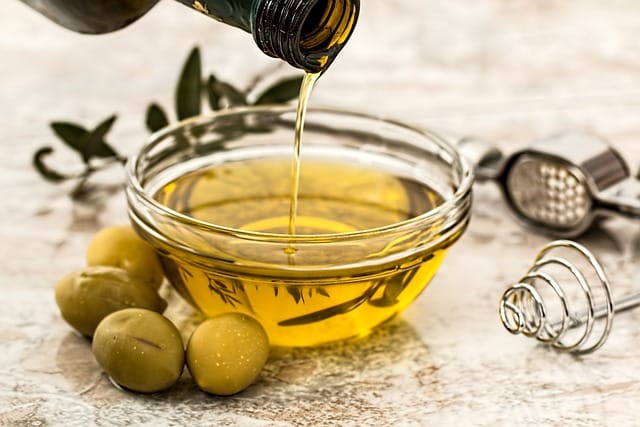How to grow Olives
Olives are widely cultivated for their fruit and oil

In this article:
- Introduction to growing olives
- Choosing the right olive variety
- Climate and soil requirements
- Preparing the soil for olive cultivation
- Propagation methods: seedling vs. grafting
- Planting olives: spacing and arrangement
- Watering and irrigation techniques
- Fertilization and nutrient management
- Pruning and training olive trees
- Pest and disease control measures
- Harvesting olives: when and how to pick
- Curing and processing olives
- Storing and preserving olives
- Common challenges in olive cultivation
- Sustainable practices in olive farming
- Promoting biodiversity in an olive orchard
- Commercial olive production and marketing
- Popular olive uses and recipes
- Health benefits of consuming olives
- Conclusion: Tips for successful olive growing
Introduction to growing olives
Olives are widely cultivated for their fruit and oil. In this article, we will guide you through the process of growing olives, from choosing the right variety to harvesting and processing.
Choosing the right olive variety
The first step in growing olives is selecting the appropriate variety. Consider factors such as climate, soil conditions, and desired fruit characteristics when making your selection.
Climate and soil requirements
Olives thrive in Mediterranean climates with mild winters and hot, dry summers. They require well-drained soil with a pH between 6 and 8.
Preparing the soil for olive cultivation
Prepare the soil by removing weeds, tilling, and incorporating organic matter. Conduct a soil test to determine any necessary amendments.
Propagation methods: seedling vs. grafting
Decide between seedling propagation and grafting. Seedlings are more affordable but may not retain the desired characteristics. Grafted trees ensure consistency in fruit quality.
Planting olives: spacing and arrangement
Plant olive trees in rows with a spacing of 20-30 feet between trees. Allow sufficient distance between rows for air circulation and machinery access.
Watering and irrigation techniques
Establish a proper watering schedule for olives, providing regular but not excessive irrigation. Drip irrigation is recommended to minimize water wastage and improve efficiency.
Fertilization and nutrient management
Fertilize olives regularly to ensure optimal growth and fruit production. Conduct soil tests to determine the specific nutrient requirements and adjust fertilization accordingly.
Pruning and training olive trees
Prune olive trees annually to maintain their shape, encourage air circulation, and remove diseased or damaged branches. Train them into desired forms, such as vase or central leader.
Pest and disease control measures
Implement pest and disease management practices to protect your olive trees. Monitor for common pests and diseases such as olive fruit fly, scale insects, and Verticillium wilt.
Harvesting olives: when and how to pick
Harvest olives when they reach their desired ripeness, which varies depending on the desired end use. Select either handpicking or mechanical harvesting methods.
Curing and processing olives
Curing olives involves removing their bitterness through various methods, like water curing or brine curing. Experiment with different curing techniques to find your preferred flavor profile.
Storing and preserving olives
Store cured olives in jars or containers filled with brine or olive oil. Properly stored olives can last for several months. Explore additional preservation methods, such as pickling and fermenting.
Common challenges in olive cultivation
Be aware of potential challenges in olive cultivation, including frost damage, diseases, inadequate pollination, and poor fruit set. Implement appropriate measures to minimize these challenges.
Sustainable practices in olive farming
Adopt sustainable farming practices to minimize environmental impact and promote long-term soil health. Examples include conservation tillage, cover cropping, and using organic fertilizers.
Promoting biodiversity in an olive orchard
Create a diverse ecosystem in your olive orchard to enhance natural pest control and improve soil fertility. Plant companion crops, provide habitat for beneficial insects, and avoid excessive pesticide use.
Commercial olive production and marketing
If you plan to commercially grow olives, consider factors such as market demand, production costs, and distribution channels. Develop a marketing strategy to effectively promote your products.
Popular olive uses and recipes
Explore the versatile uses of olives in various cuisines worldwide. Learn popular recipes for olive-based dishes, such as tapenade, salads, and pasta sauces.
Health benefits of consuming olives
Discover the numerous health benefits associated with consuming olives. They are rich in healthy fats, antioxidants, and a range of minerals and vitamins that support overall well-being.
Conclusion: Tips for successful olive growing
To achieve successful olive cultivation, pay attention to selecting the right variety, providing optimal growing conditions, implementing proper care and maintenance practices, and staying informed about the latest industry trends.
